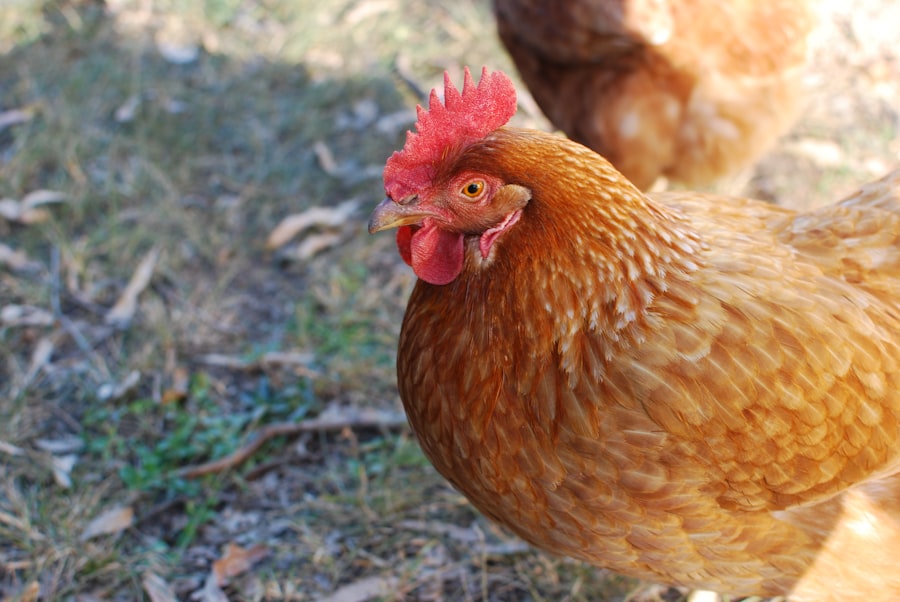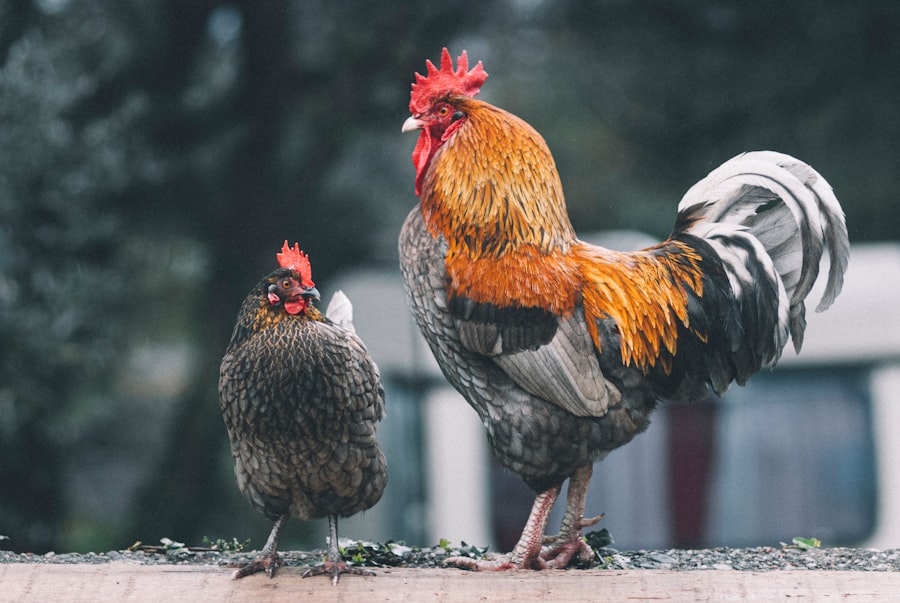Space requirements are essential for the health and welfare of chickens. The recommended minimum space is 2-3 square feet per chicken inside the coop and 8-10 square feet per chicken in the outdoor run. However, providing more space is beneficial.
Adequate space in the coop allows chickens to roost comfortably and lay eggs in nesting boxes. Insufficient space can lead to stress, aggression, and health issues such as feather picking and increased disease susceptibility. In the outdoor run, space is necessary for foraging, exploration, and exercise.
Limited space may result in boredom and destructive behaviors like feather pecking and cannibalism. Space requirements may vary depending on the chicken breed and environmental factors such as climate and weather conditions. It is important to consider these aspects when determining appropriate space allocations.
Proper space allocation contributes to both physical and mental well-being of chickens. Chickens with sufficient space to express natural behaviors are generally healthier, less stressed, and more productive in terms of egg laying. Therefore, careful consideration of space requirements is crucial for maintaining a thriving chicken flock.
Table of Contents
- 1 Determining the Ideal Number of Chickens for Your Coop
- 2 Factors to Consider When Calculating Chicken Capacity
- 3 Tips for Maximizing Space in Your Chicken Coop
- 4 The Importance of Proper Ventilation and Lighting
- 5 Managing Chicken Behavior in a Crowded Coop
- 6 Considerations for Expanding Your Flock
- 7 FAQs
- 7.1 What is the general rule for how many chickens can be kept in a chicken coop?
- 7.2 What factors should be considered when determining the number of chickens for a coop?
- 7.3 What are the consequences of overcrowding chickens in a coop?
- 7.4 Are there any regulations or guidelines for the number of chickens in a coop?
- 7.5 How can I maximize the space in my chicken coop to accommodate more chickens?
Key Takeaways
- Chickens require a minimum of 2-3 square feet of space per bird in the coop
- The ideal number of chickens for your coop depends on the size of the coop and the breed of chickens
- Factors to consider when calculating chicken capacity include the size of the coop, the breed of chickens, and their behavior
- To maximize space in your chicken coop, consider using vertical space, adding roosting bars, and using nesting boxes efficiently
- Proper ventilation and lighting are important for the health and well-being of your chickens, as well as for controlling odors and moisture in the coop
Determining the Ideal Number of Chickens for Your Coop
Coop Size Matters
The size of your coop is a crucial factor in determining the ideal number of chickens for your setup. A general guideline is to provide 2-3 square feet of space per chicken inside the coop. Therefore, if you have a small coop, you may need to limit the number of chickens you keep in order to prevent overcrowding.
Outdoor Run Considerations
In addition to the coop size, you’ll need to consider the size of your outdoor run and ensure that it provides enough space for your chickens to roam and forage.
Breed-Specific Needs
The specific needs of the chicken breeds you are raising will also impact the ideal number of chickens for your coop. Some breeds are more active and require more space, while others may be more docile and can tolerate closer quarters. It’s essential to research the specific space requirements for the breeds you are interested in and take this into account when determining the size of your flock.
Your Capabilities and Resources
Finally, consider your own capabilities and resources when deciding on the number of chickens for your coop. Keeping a larger flock will require more time, effort, and resources for feeding, cleaning, and general care. It’s essential to be realistic about what you can manage and ensure that you are able to provide proper care for the number of chickens you choose to keep.
Factors to Consider When Calculating Chicken Capacity

When calculating the capacity of your chicken coop, there are several factors to consider in order to ensure that you are providing adequate space and resources for your flock. These factors include the size of the coop and outdoor run, the specific needs of the chicken breeds you are raising, and your own capabilities and resources. The size of your coop will play a significant role in determining the capacity for your chickens.
As mentioned earlier, a general guideline is to provide 2-3 square feet of space per chicken inside the coop. Therefore, the size of your coop will dictate how many chickens it can comfortably accommodate. Additionally, you’ll need to consider the size of your outdoor run and ensure that it provides enough space for your chickens to roam and forage.
The specific needs of the chicken breeds you are raising will also impact the capacity of your coop. Some breeds require more space and may be more active, while others may be more docile and can tolerate closer quarters. It’s important to research the specific space requirements for the breeds you are interested in and take this into account when calculating the capacity of your coop.
Finally, consider your own capabilities and resources when determining the capacity of your coop. Keeping a larger flock will require more time, effort, and resources for feeding, cleaning, and general care. It’s important to be realistic about what you can manage and ensure that you are able to provide proper care for the number of chickens you choose to keep.
Tips for Maximizing Space in Your Chicken Coop
Maximizing space in your chicken coop is essential for providing a comfortable and healthy environment for your flock. There are several tips and strategies that can help you make the most of the available space in your coop and outdoor run. One effective way to maximize space in your coop is to utilize vertical space.
Installing roosts at different heights can provide more room for chickens to perch at night, freeing up floor space for other activities. Additionally, using hanging feeders and waterers can help keep the floor area clear and provide more room for movement. Another tip for maximizing space is to use multi-purpose furniture and equipment.
For example, nesting boxes can be designed to also serve as roosting areas during the day, saving space and providing additional options for the chickens. Additionally, consider using stackable or collapsible equipment that can be easily stored when not in use. In the outdoor run, providing ample opportunities for vertical exploration can help maximize space.
Adding structures such as perches, platforms, and hanging toys can encourage chickens to use all available space and prevent overcrowding in one area. Additionally, rotating or moving portable fencing or netting can help give chickens access to fresh areas of grass and vegetation, preventing overgrazing and allowing for natural foraging behaviors. By implementing these tips and strategies, you can make the most of the available space in your chicken coop and outdoor run, providing a comfortable and stimulating environment for your flock.
The Importance of Proper Ventilation and Lighting
Proper ventilation and lighting are essential components of a healthy chicken coop environment. Good ventilation helps remove excess moisture, ammonia, and airborne pathogens from the coop, while adequate lighting helps regulate the chickens’ internal clocks and promotes natural behaviors such as egg laying. In terms of ventilation, it’s important to ensure that there is enough airflow in the coop to prevent the buildup of harmful gases such as ammonia.
This can be achieved through windows, vents, or fans that allow fresh air to circulate throughout the coop. Additionally, proper ventilation helps regulate temperature and humidity levels inside the coop, creating a more comfortable environment for the chickens. When it comes to lighting, natural light is ideal for regulating the chickens’ internal clocks and promoting natural behaviors.
However, supplemental lighting may be necessary during certain times of year or in regions with limited daylight hours. Providing 14-16 hours of light per day can help maintain egg production during shorter days and encourage healthy growth and development in young chicks. It’s important to strike a balance with lighting, as too much or too little light can have negative effects on the chickens’ health and behavior.
Additionally, ensuring that there are dark areas in the coop where chickens can rest at night is crucial for their well-being. By paying attention to proper ventilation and lighting in your chicken coop, you can create a healthier and more comfortable environment for your flock, leading to better overall productivity and well-being.
Managing Chicken Behavior in a Crowded Coop

Preventing Competition for Resources
In a crowded coop environment, it’s essential to manage chicken behavior to prevent stress, aggression, and other negative behaviors that can arise from overcrowding. One effective way to manage behavior is to provide multiple feeding and watering stations. This prevents competition for food and water and ensures that all chickens have access to these essential resources. Additionally, spreading out treats or supplemental feed throughout the coop can encourage chickens to explore different areas and prevent overcrowding around one feeding station.
Providing Enrichment Opportunities
Another strategy is to provide plenty of enrichment opportunities to keep chickens occupied and prevent boredom-related behaviors such as feather pecking or aggression. This can include hanging toys, perches at different heights, dust bathing areas, or access to natural vegetation in an outdoor run.
Monitoring and Intervening
It’s also important to monitor chicken behavior regularly and intervene if any signs of stress or aggression arise. This may involve separating aggressive individuals or providing additional resources such as nesting boxes or roosting space to alleviate competition.
By implementing these strategies and paying attention to chicken behavior in a crowded coop, you can help maintain a harmonious environment for your flock and prevent negative behaviors associated with overcrowding.
Considerations for Expanding Your Flock
If you’re considering expanding your flock, there are several important considerations to keep in mind in order to ensure that you are able to provide adequate space and resources for your growing number of chickens. One of the first things to consider is whether your current coop and outdoor run have enough space to accommodate additional chickens. It’s important to assess whether there is enough room for roosting, nesting boxes, feeding stations, and general movement within the existing setup.
Additionally, consider how adding more chickens will impact resources such as feed, water, and bedding. You’ll need to ensure that there are enough resources available for all chickens without creating competition or overcrowding around essential areas. Another consideration is how adding more chickens will impact behavior within the flock.
Introducing new birds can disrupt social dynamics within an existing flock, leading to aggression or stress. It’s important to carefully monitor behavior during introductions and be prepared to separate individuals if necessary. Finally, consider whether you have the time, resources, and capabilities to care for a larger flock.
Keeping more chickens will require additional time for feeding, cleaning, monitoring health, and general care. It’s important to be realistic about what you can manage and ensure that you are able to provide proper care for an expanded flock. By carefully considering these factors before expanding your flock, you can ensure that you are able to provide a comfortable and healthy environment for all of your chickens while maintaining harmony within the flock.
If you’re wondering how many chickens you can keep in a chicken coop, you may also be interested in learning about the best flooring options for a chicken coop. Check out this article on choosing the right floor for your chicken coop to ensure your chickens have a comfortable and clean living space.
FAQs
What is the general rule for how many chickens can be kept in a chicken coop?
The general rule is to provide at least 2-3 square feet of space per chicken inside the coop.
What factors should be considered when determining the number of chickens for a coop?
Factors to consider include the size of the chickens, the size of the coop, the amount of time the chickens will spend inside the coop, and the presence of a run or outdoor space for the chickens.
What are the consequences of overcrowding chickens in a coop?
Overcrowding can lead to stress, aggression, and an increased risk of disease and parasites among the chickens. It can also result in a decrease in egg production and overall health of the chickens.
Are there any regulations or guidelines for the number of chickens in a coop?
Regulations and guidelines for the number of chickens in a coop can vary by location, so it’s important to check with local authorities or agricultural extension offices for specific requirements.
How can I maximize the space in my chicken coop to accommodate more chickens?
You can maximize space by using vertical roosts, providing nesting boxes that can be accessed from outside the coop, and ensuring good ventilation to allow for more chickens in the same space.
Meet Walter, the feathered-friend fanatic of Florida! Nestled in the sunshine state, Walter struts through life with his feathered companions, clucking his way to happiness. With a coop that’s fancier than a five-star hotel, he’s the Don Juan of the chicken world. When he’s not teaching his hens to do the cha-cha, you’ll find him in a heated debate with his prized rooster, Sir Clucks-a-Lot. Walter’s poultry passion is no yolk; he’s the sunny-side-up guy you never knew you needed in your flock of friends!







